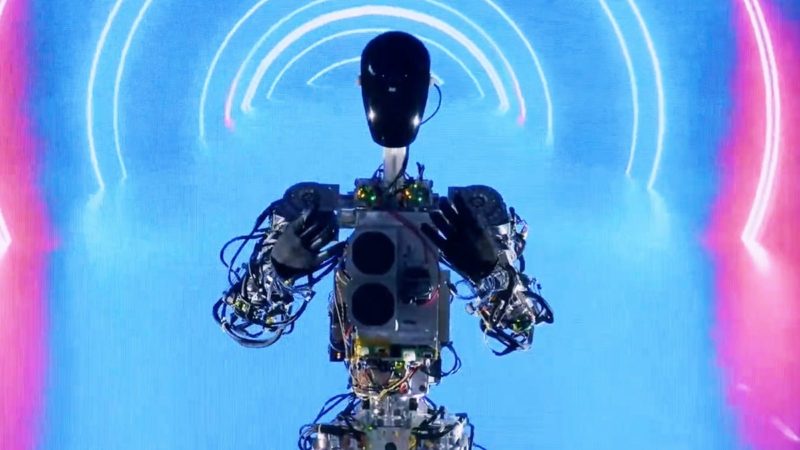The Tesla Bot, code-named Optimus, was presented by Tesla CEO Elon Musk on Friday. The robot strolled around a stage, waved, and moved its arms in a slow dancing routine. In three to five years, the robot may cost $20,000, according to Musk. Tesla built it in less than eight months.
Tesla’s 2022 AI Day presentation was made remarkable by introducing Robot’s driver assistance system for its vehicles, called Autopilot. It is integrated with specific AI software and sensors. According to Elon Musk, “we want to create a usable humanoid robot as soon as we can”. The first applications will be in Tesla’s car plants, he said, while it may eventually “benefit millions of people.”
Elon Musk then clarified in a Q&A session that Tesla is very skilled at creating the AI and actuators required for robotics based on experience making electric car drive units. Musk claimed that would enable it to begin producing capable robots and test them in its facilities. He asserted that Tesla’s Optimus is made for mass production in the “millions” of units and to be very capable, setting it apart from other “quite amazing humanoid robot displays.”
Then Tesla’s team displayed a second prototype of Optimus that was quite close to production, with its body entirely constructed but not yet fully functional. It was placed up on a platform and waved to the crowd to demonstrate the wrist and hand’s range of motion. Musk stated that this device still has actuators, a battery pack, and everything else but “wasn’t quite ready to walk” when it was eventually rolled off by a team of workers.
The Autopilot software from Tesla was transferred from its automobiles to the bot and redesigned to function in the new form and setting. Tesla motion captured humans performing actual chores, such as lifting a box, and then used Optimus to replicate the movements using inverse kinematics. Future uses might involve cooking, and gardening, according to Elon Musk, who also stated that production might begin as early as next year.
Equipped with Wi-Fi and LTE connectivity, a 2.3kWh battery pack, and a Tesla SoC it will be ready to serve in 2027. The robot’s joints, such as its hands, wrists, and knees, were the focus of demonstrations that illustrated how data for each joint was analysed before looking for patterns among designs to identify a technique that required only six distinct actuators. The “Biologically Inspired Design” of the human-like hands, according to engineers, will make them better suited for picking up things of diverse shapes and sizes, holding a 20-point bag, and having an accurate hold.
At last year’s AI Day, Musk originally revealed the “Tesla Bot,” promising that it will transform the company’s production and assembly line operations. According to Musk, the robots will have an external override mechanism so that people can stop them for safety reasons; this override mechanism won’t be updated online. Long-term, the robots will probably be “controlled by some principles of robotics that you cannot transcend, like not doing harm to people,” Musk added, alluding to science fiction author Isaac Asimov’s three laws of robotics. This is presumably for safety reasons.
Now we have to wait and see when this robot will be fully functional. For more tech updates follow: https://technoun.com/






